Atlas Shrugged Part III: Who Is John Galt?
Part of what adds to the general aura of amateurishness around the Atlas trilogy is that the third movie has a completely different cast than the second (which had a completely different cast than the first). Obviously, if it had been either a critical or commercial success, the actors would be more eager to reprise their roles. As is, it seems like everyone associated with the films couldn’t cash their paychecks and get out of town fast enough.
With each movie, the casting gets more slipshod, as if the filmmakers were putting less and less effort into it. By the end, this leads to some hilarious crimes against continuity. Try as you might to maintain your suspension of disbelief, there are some parts that will jar you right out of it.
Let’s start with the new Dagny, Laura Regan. As I’ve observed in the past, I doubt it’s possible for any normal human being to play a Randian character the way they’re meant to be played. But whether because of bad acting, bad directing, or both, it seems like most of the cast didn’t even try. Dagny is supposed to be a creature of extremes: an ice queen on the outside, with volcanic passion burning within and occasionally erupting. But this actress plays her in a style best described as “kitten on tranquilizers”:
Is it a coincidence that Dagny’s plane crashes and suddenly she’s a different person? Maybe true capitalists can regenerate, Time Lord-style.
You might attribute this to being mildly concussed from the plane crash, except that this is the way she acts throughout the movie. When she should be fiercely determined, she just seems dazed and sleepy. When she should be boiling with anger, she sounds like a kindergarten teacher reminding a toddler to say please and thank you. This performance has “we used the first take of everything” written all over it.
There are two other characters who fare especially badly from the recasting, and one is Francisco d’Anconia. As you may remember, Francisco and Dagny are childhood friends; they’re supposed to be the same age. The other two movies depicted this accurately. In this movie, the filmmakers must have just given up, because they cast someone twenty years older than Dagny. He looks like he could be her father:
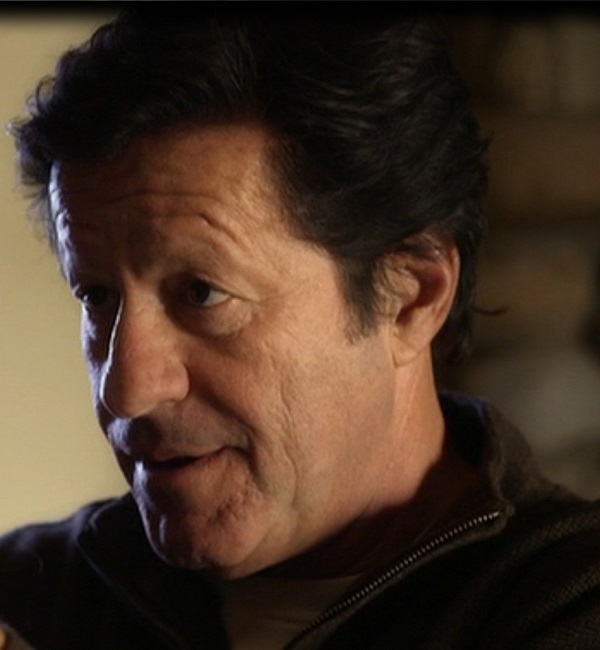
The other, particularly hilarious case is Robert Stadler. Recall that, in the first movie, he’s a person of color with a Latino accent. In the second movie, he’s Robert Picardo, a white American. In the third movie, his ethnicity takes yet another sharp swerve, and he suddenly and inexplicably becomes British:
Throughout the trilogy, Stadler’s ethnicity veers wildly out of control, like a race car crashing and pinwheeling into the stands. It’s as if the filmmakers scorned the idea that two actors playing the same role should look, speak or act anything alike. This could be taken as an artistic statement; but then, why did they take the trouble to find a black actor to play Eddie in all three movies?
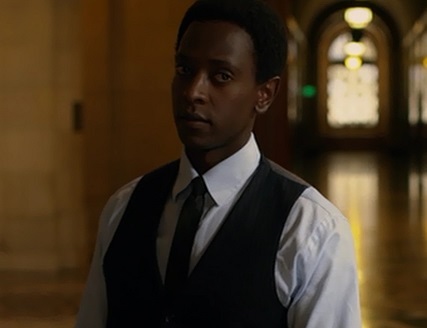
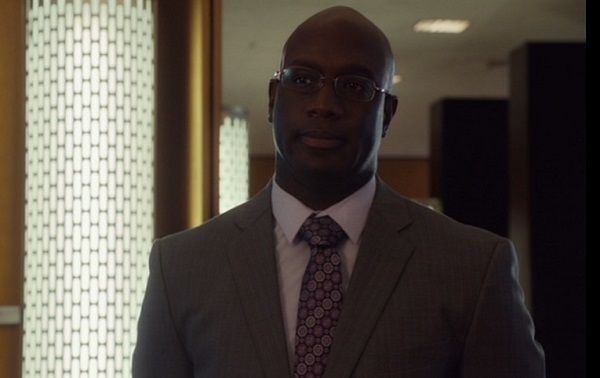
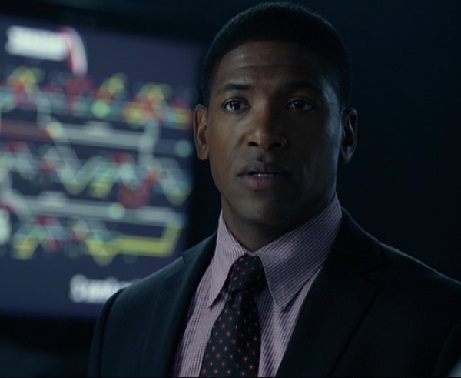
Their regard for continuity is inexplicably selective.
Last but not least, there’s John Galt. Ironically, he’s the only character who doesn’t suffer from erratic changes of appearance, since he doesn’t appear in the first two movies except in silhouette. And they ought to have a clear template to work off of. Here’s how I imagine the filmmakers wrote their casting call:
…a face that bore no mark of pain or fear or guilt. The shape of his mouth was pride, and more: it was as if he took pride in being proud. The angular planes of his cheeks made her think of arrogance, of tension, of scorn — yet the face had none of these qualities, it had their final sum: a look of serene determination and of certainty, and the look of a ruthless innocence which would not seek forgiveness or grant it. It was a face that had nothing to hide or to escape, a face with no fear of being seen, or of seeing, so that the first thing she grasped about him was the intense perceptiveness of his eyes — he looked as if his faculty of sight were his best-loved tool and its exercise were a limitless, joyous adventure…
But apparently, what that comes down to is “scruffy surfer dude”. Because what they got is this:
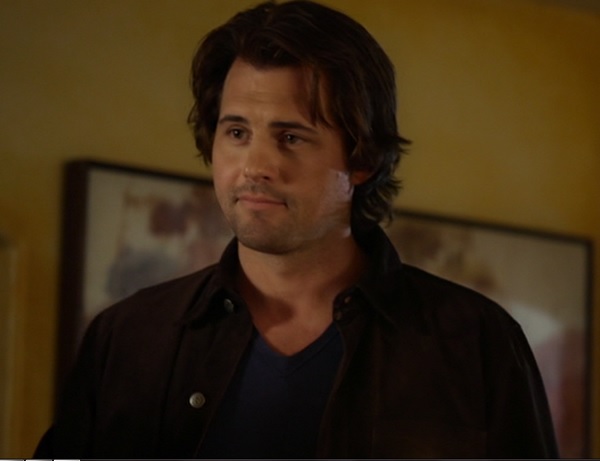
Personally, I’m disappointed they didn’t get the guy from Space Mutiny to play John Galt. At least he knew how to give the kind of large-ham performance the role calls for. Instead, we got this pot of beef broth clad in flannel.
He’s not exactly bad in the role, nor is he tranquilized like Dagny, it’s more that he’s… blah. Low-energy. Bland. John Galt is supposed to be the greatest genius in human history. He should give the impression of being ruthless and slightly dangerous by virtue of his superior intellect. But this actor plays him as mild-mannered and agreeably mellow, like the sensitive hipster guy in your yoga class.
Another odd artistic choice you can see in these clips is that all the bad guys wear suits and ties, while the capitalists dress like truckers or lumberjacks. Given Ayn Rand’s worship of wealth and power, it’s strange that they’d use class markers in this way to indicate where the audience’s sympathy should be. But this faux-common touch falters a bit when you remember that most of the good guys are millionaire executives, if not hereditary scions of multinational corporations. This is hardly a slobs-versus-snobs battle we’re talking about.
However, I’m surprised and pleased to report that the casting isn’t all bad. In fact, I think the filmmakers must have read my critique of the casting in Part I, because they did get one important thing right: they finally cast Ellis Wyatt with a Yosemite Sam mustache!
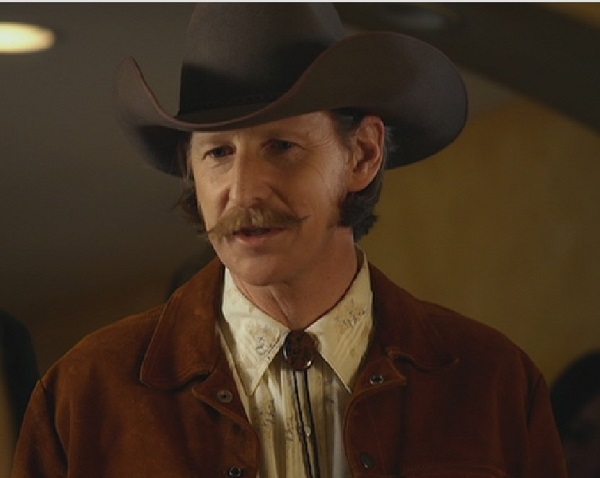
Other posts in this series: